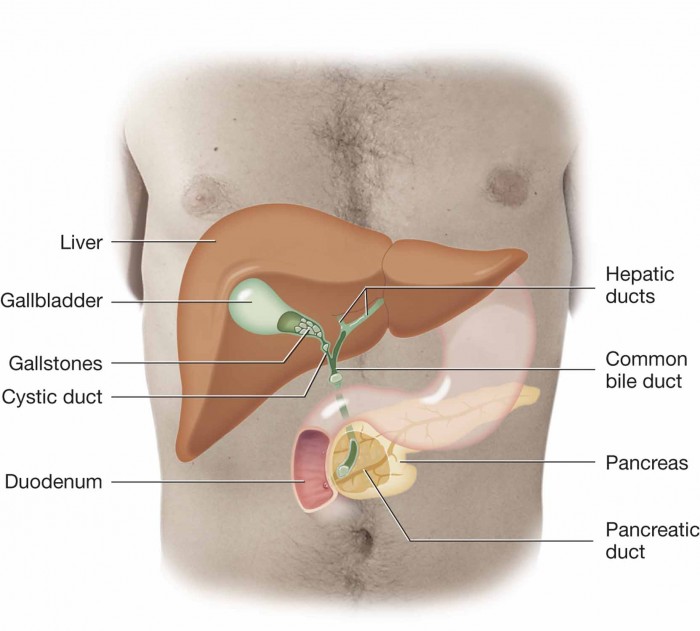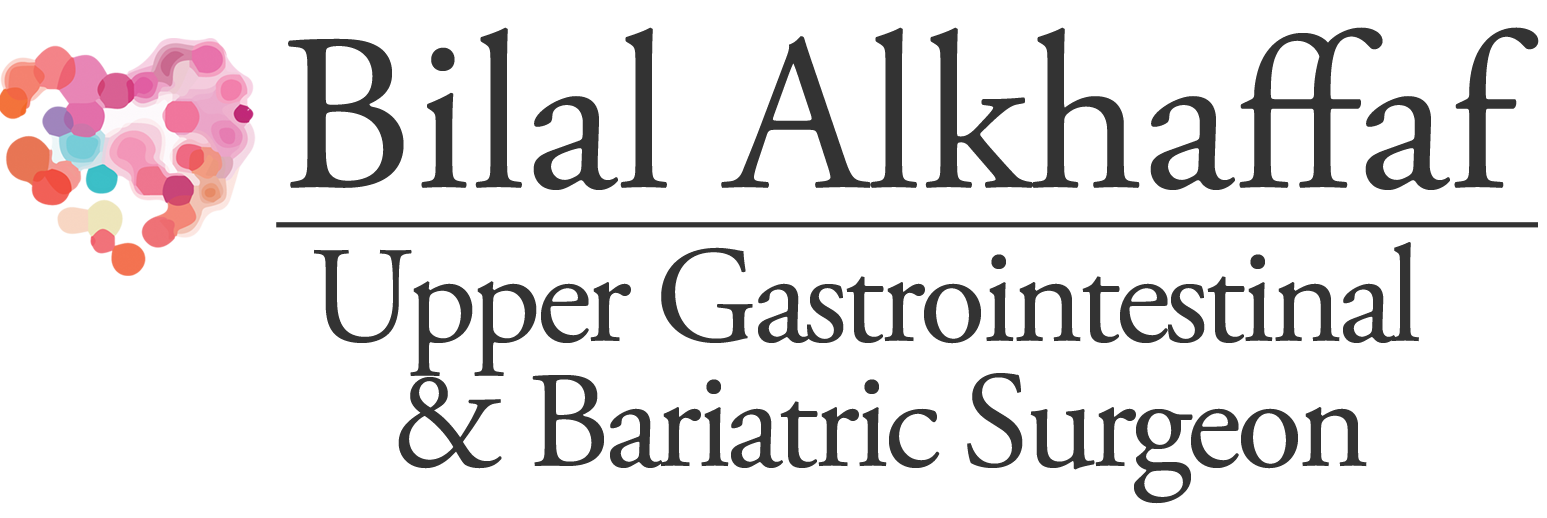Mr Alkhaffaf specialises in the treatment of gallstones. His expertise in keyhole surgery means that most patients do not need an overnight stay in hospital, post-operative pain is minimised and normal activities can be restarted sooner.
Whether you are insured or self-paying, you will be seen quickly and assessed carefully before a personalised treatment is put together specifically for you.
Common Questions About Gallstones
The gallbladder is a ‘bag’ which sits under the liver. It collects bile which is produced from the liver. When you eat, the gallbladder releases this bile which mixes with your food and helps digestion of fat in the diet.
Q: What are gallstones?
Gallstones occur when bile, which is usually liquid, forms tiny crystals and over time grows into stones which sit in the gallbladder. Gallstones can cause pain, infection and in some circumstances inflammation of the pancreas gland. They are very common and approximately 1 in every 7 adults will develop gallstones during their lifetime.
Q: What symptoms do gallstones cause?
Gallstones may not necessarily cause symptoms and may be found incidentally during the investigation of an unrelated condition. When gallstones become symptomatic, they can cause:
-Severe pain or a dull ache in the upper abdomen
–Nausea and vomiting
–Fever
–Jaundice (often noticed as yellowing of the skin or the eyes)
Q: What causes gallstones?
There are many causes of gallstones. Some of the commonest causes include:
-Being overweight
-Advancing age
-Previous pregnancy
-Family history
-Sudden weight loss (for example following obesity surgery)
Q: How Are Gallstones Treated?
Sometimes gallstones are found by chance whilst investigating an unrelated condition. If they do not cause you symptoms, then they do not need to be treated. The only effective way to treat gallstones is by removing the gallbladder along with the stones. This is done using keyhole (laparoscopic) surgery using four very small incisions. Most people can be discharged from hospital on same the day of surgery. Recovery takes around 7 to 10 days although you may be able to return to work sooner.
It is very rare that patients are unable to undergo keyhole surgery. In less than 2% of cases however, it is not safe to carry out keyhole surgery and a larger cut under the right rib is required.
Q: Are There Any Risks With Surgery?
A keyhole operation to remove your gallbladder (laparoscopic cholecystectomy) operation is safe and effective and the risks associated with it are small. However no procedure or surgery is risk-free. Complications following surgery can include:
–Internal bleeding
–Infection of the keyhole wounds
–Perforation: The keyhole instruments used to remove the gallbladder can injure surrounding structures, such as the intestine, bowel and blood vessels. The risk is increased if the gallbladder is inflamed. This type of injury is rare, occurring in less than 1% of cases, and can usually be repaired at the time of the operation. Sometimes injuries are noticed afterwards and a further procedure is needed.
–Leakage of bile: When the gallbladder is removed, special clips are used to seal the tube that connects the gallbladder to the main bile duct draining the liver. Despite this, bile fluid can still occasionally leak out. Sometimes this fluid can be drained off. In rare cases, an operation is required to drain the bile and wash out the inside of the abdominal cavity. Bile leakage occurs in around 1-2% of cases.
–Injury to the bile duct: This is extremely rare and occurs in approximately 1 in every 500 cases. Should an injury to the bile duct occur, you may require a further procedure to repair the injury.
–DVT: A ‘deep vein thrombosis’ is another word for a clot in the leg. These clots can rarely also travel to the lung. We routinely prescribe you special stockings and blood thinning medication following your surgery to reduce the risk of this happening. In addition, because keyhole surgery enables you to return to your daily activities quickly, the risk of developing a DVT is further reduced.
–Post-Cholecystectomy Syndrome: Around 1 in 7 patients can develop symptoms which can be similar to those caused by gallstones. Although poorly understood, post-cholecystectomy syndrome may be caused by bile irritation of the intestines and stomach. In some cases, pain may be caused by gallstones still trapped in the bile duct. This scenario would require careful investigation and may necessitate further treatment.

